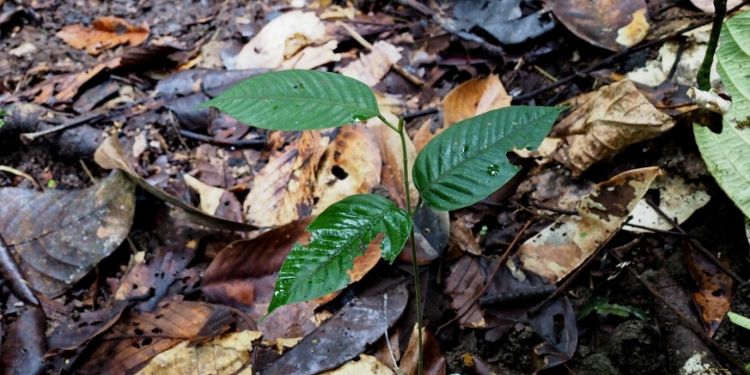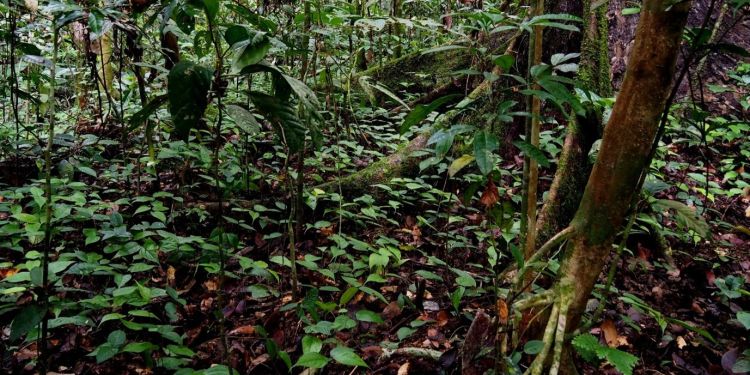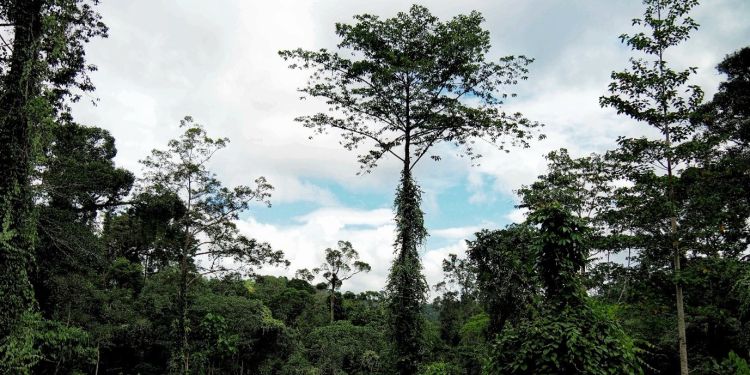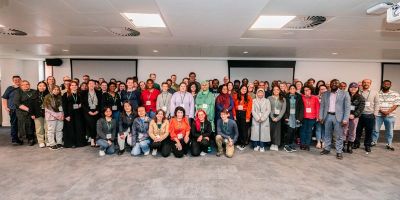Next generation of trees threatened 30 years after logging

Rainforest seedlings are more likely to survive in natural forests than in places where logging has happened – even if tree restoration projects have taken place, says new research.
Scientists monitored over 5,000 seedlings for a year and a half in North Borneo.
They studied a landscape containing both natural forest and areas logged 30 years ago – some of which were recovering naturally, some restored by methods like tree planting.
A drought had triggered “mass fruiting” across all three areas, with many trees simultaneously dropping fruit and new seedlings emerging.
How do seedlings grow in recovering forests?
At first, both natural forests and restored forests had high numbers of seedlings compared to naturally recovering forests. This suggests that restoration enhanced fruit production.
But these benefits did not last. Low seedling survival in the restored forest meant that, by the end of the study, similarly low numbers of seedlings remained in restored and naturally recovering forest.
Seedling populations remained higher in the natural forests that had never been subject to logging.
These results show that regeneration may be challenged by different factors depending on the restoration approach – seed availability in naturally recovering sites and seedling survival in sites where planted trees have matured.
These differences may have longer-term implications for how forests can deliver key ecosystem services such as carbon sequestration.
We were surprised to see restoration sites having lower seedling survival
Dr Robin Hayward,communication and engagement officer for the Leeds Ecosystem, Atmosphere & Forest (LEAF) Centre at the University of Leeds, undertook this research during their PhD at the University of Stirling.
They said: “We were surprised to see restoration sites having lower seedling survival. After such a productive fruiting event in the restored forest, it’s disappointing that so few were able to survive – and to think what this might mean for the long-term recovery of different tree species.”
Whilst restoration improves growth in these forests, the research indicates that it’s not yet enabling the establishment of the next generation of seedlings.
Dr David Bartholomew, based at the University of Exeter during the study and now at Botanic Gardens Conservation International, said: “Our findings suggest that seedlings are experiencing stress in logged forests. This could be due to changes to the canopy structure, microclimate and soil, with current restoration treatments insufficient to eliminate this stress.
“In particular, highly specialised species seem to struggle to survive, leaving communities with reduced species diversity compared to intact forest.”
Daisy Dent of ETH Zürich, Switzerland and the Smithsonian Tropical Research Institute, Panama said: “Rainforests are complex systems and there are many possible explanations for our results. For example, animals that eat seeds – like bearded pigs – may be drawn into restored forest patches to eat the more abundant seeds and seedlings, rather than moving into adjacent poor-quality logged forest.
“In natural forests, animals potentially move more freely and so do not exhaust seed supplies in the same way.”
Low rates of survival three decades after logging
Selective logging of forests is prevalent throughout the tropics. Long-term recovery is crucial to maintaining carbon stocks and biodiversity.
The low rates of survival among seedlings three decades after logging raise concerns about potential regeneration failure in future generations of trees.
Dr Lindsay F Banin of the UK Centre for Ecology & Hydrology, said: “Together, these results reveal there may be bottlenecks in recovery of particular elements of the plant community.
“We are now progressing this research to better understand the various stages of the regeneration process – fruiting, germination, establishment and causes of mortality – to help understand which mechanisms are driving the patterns we have observed and how we can better assist forest regeneration and support the long-term sustainability of degraded forests.”
The study highlights the importance of carefully designing, monitoring and adaptively managing restoration projects so that they can recover both biodiversity and carbon in biomass over the long term.
This is key to restoring degraded landscapes and achieving global targets such as those outlined in the UN Kunming-Montreal Global Biodiversity Framework and the UN Decade on Ecosystem Restoration.
Plant traits and adaptations
Plant traits, or characteristics that determine how plants function, may be the key to understanding the low survival rates of seedlings. They can reveal which resources the plants are struggling to access.
The study observed differences in traits of the plants in logged areas compared to intact forests. It showed that some species may be struggling to survive in disturbed areas while some have to adapt how they grow to accommodate. This could lead to differences in biodiversity and ecological functioning in the long term.
The study was conducted in the Danum Valley Conservation Area and the surrounding Ulu Segama landscape of North Borneo. Here, intact forests are dominated by a tree family, the Dipterocarpaceae, which along with many other tree families, fruits in large inter-annual episodes known as masting events.
These cyclical events have important cascading effects on food availability for animal species.
This study captures just 18 months after one fruiting event. Longer-term research is required to understand the full effects of historic disturbance and how to enhance seedling survival.
All images in this article are courtesy of David Bartholemew.








